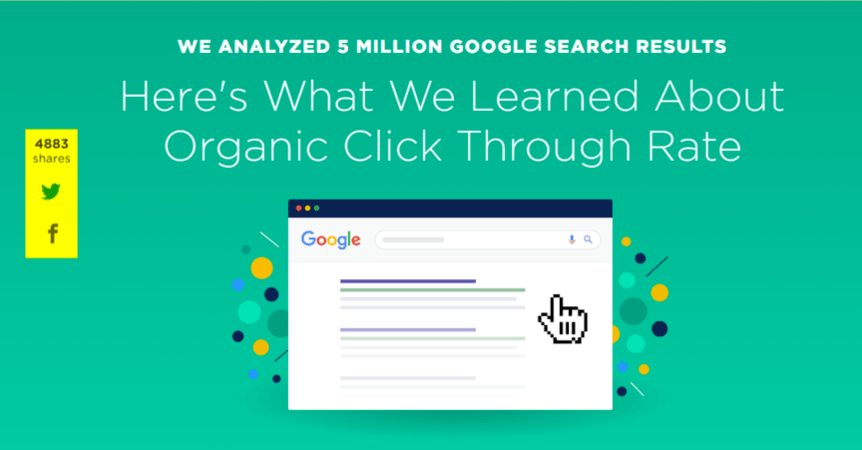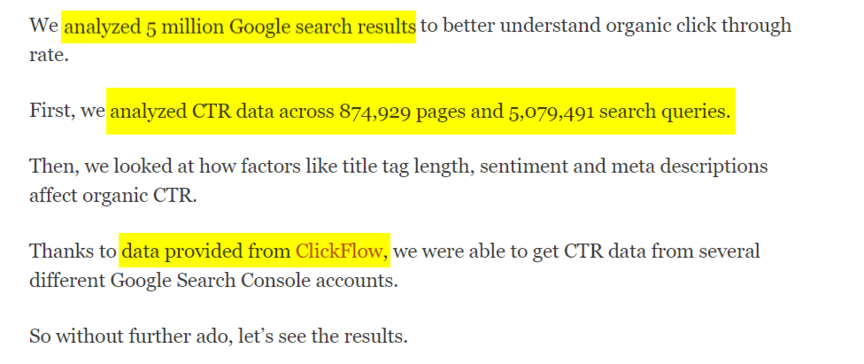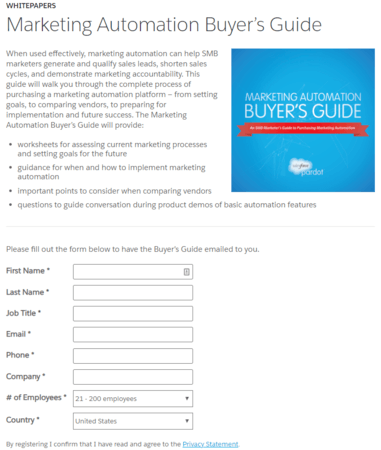-
 11 min. read
11 min. read
-
 Sarah Berry
Sarah Berry Web Marketing Consultant
Web Marketing Consultant
- Sarah Berry is a Google Analytics-certified Web Marketing Consultant at WebFX. She’s written over 400 articles on digital marketing, covering topics like SEO, CRO, and Amazon. When she isn’t polishing her Time Magazine Person of the Year Award, she’s spending time with her flock of ducks.
Less than 20% of people reach the end of an online post. That must mean all your content efforts should go towards writing short-form content versus long-form content, right? If users are already struggling to finish articles, how can you expect them to get through a post with 1200 or more words?
Easy, there. While short-form content (which ranges from 500 to 800 words) can provide a brief traffic boost and help users, it doesn’t deliver the continuous benefits that long-form content — or pages that typically have 1200+ words — offers. That’s why, in the long-form vs. short-form content debate, long-form content wins. Keep reading to learn why you should use long-form content in your content marketing strategy, plus how to write A+ long-form content for generating leads, traffic, and social shares. If you need help developing and writing long-form content, see how our professional copywriting services can help!
4 reasons long-form content beats short-form content every time
When it comes to long-form content vs. short-form content, long-form wins for a few reasons, including:
1. Long-form content earns more social shares than short-form content
Earning social shares for your content matters allows you to:
- Get more traction for your articles
- Attract more traffic, links, and awareness
- Send positive signals to search engines like Google and Bing
 Again, studies show that long-form consistently outperforms short-form when it comes to shares:
Again, studies show that long-form consistently outperforms short-form when it comes to shares:
- BuzzSumo: A BuzzSumo study investigated 100 million articles and found that posts with 3000-10,000 words performed the best when it came to shares. Posts with 1000 words or less received the least number of shares.
- Moz: A Moz study, in collaboration with BuzzSumo, also found that content with more than 1000 words earned more shares (and links) than content under 1000 words. This study looked at more than one million websites.
- HubSpot: A HubSpot study, which focused on the company’s 6000-plus blog posts, also found that longer content did better when it came to shares and links. They found that content with more than 2500 words did the best.
While longer content earns more shares and backlinks, it’s important to remember that this content must offer users value. If you write a 2500-word post but fill it with irrelevant content that offers zero value, you can’t expect people to share it or bloggers to link to it.
2. Long-form content ranks for more keywords than short-form content
Compared to short-form content, long-form content ranks for more keywords. When you write a long-form, you’re writing anywhere from 1200 words to 2000 words or more. That’s a lot of writing and a sizable time commitment.
Having that kind of word count, however, allows you to explore and cover a topic and its sub-topics in-depth. Since you’re taking a 360-degree approach to covering a topic, your long-form can rank for a range of related keywords. Ranking for those related keywords can bring more traffic to your website, as well as more shares on social media.
 Not to mention, you’re answering a reader’s current question in addition to their next question — and maybe even their question after that. If you operate a contracting company, for example, you may write a long-form article that discusses contracting costs. You answer the first question, “How much does a contractor cost?” and then answer follow-up questions, like “What makes up a contractor’s costs?” With long-form content, you’re creating helpful content for your audience that also ranks well.
Not to mention, you’re answering a reader’s current question in addition to their next question — and maybe even their question after that. If you operate a contracting company, for example, you may write a long-form article that discusses contracting costs. You answer the first question, “How much does a contractor cost?” and then answer follow-up questions, like “What makes up a contractor’s costs?” With long-form content, you’re creating helpful content for your audience that also ranks well.
A top ranking, like on page one, matters because:
- Only 25% of users visit the second page of search results
- Around 75% of users click on the first, second, or third search result
- Only 0.78% of users click on a search result from page two
Rankings also matter when it comes to content because that’s how most websites get traffic. It’s also how a lot of businesses generate new leads and sales. Search helps people find and discover your company, with more than 50% of users saying they find a new product or business after using a search engine.
3. Long-form content delivers better conversion rates than short-form content
When comparing short-form vs. long-form content, long-form provides a better conversion rate. A conversion can range from product purchases to newsletter sign-ups. In most cases, the conversion will depend on the page and its place in your buying funnel.
A blog post, for example, may generate sign-ups while a product page will attract purchases. Studies show that long-form content increases conversion rates. Crazy Egg, for instance, boosted its conversion rates by 30% when it increased the length of its page.
Another study found that generating a long-form homepage boosted conversion rates by 37%. A few factors help long-form content outperform short-form content in conversions, including:
- Long-form content provides users with more information about a topic, service, or product
- Long-form content allows users to explore a topic in-depth, without bouncing between pages
- Long-form content gives users multiple opportunities to act on the page’s calls to action (CTAs)
If you want your content to not only attract traffic but also leads and revenue, make it long-form.
4. Long-form content makes you more of an authority than short-form content
Writing long-form content also positions your company as an authority in your industry.  When you’re writing long-form content, you’re investing a significant amount of time in researching a topic, as well as share your industry knowledge. Readers recognize and see this investment.
When you’re writing long-form content, you’re investing a significant amount of time in researching a topic, as well as share your industry knowledge. Readers recognize and see this investment.
That recognition can build a reader’s trust and respect for your company. It can also motivate them to share your content and follow your business’s blog. For your company, that can mean more traffic and shares for future content.
With every piece of long-form content, you position yourself as a trusted industry leader and authority, which can have a positive influence on every aspect of your business, from its website traffic to lead generation numbers.
Should I ever write short-form content?
While long-form content wins the debate between long-form content vs. short-form content, many marketers wonder the same question: Should I never write short-form content? It’s an excellent question, and it depends. The following content topics may work well (and even better) as short-form content:
- Company announcements
- Annual industry trends
- Opinion pieces
Subjects that can’t meet the word count of long-form content, which is 1200 to 2000 words or more, should also get the short-form treatment. If you come across these topics, reassess their potential value to your company and your target audience.
Bonus Read: Content Writing vs. Copywriting
How to write long-form content in 3 steps
If you’re looking to get started with long-form content, use these three steps to begin your first post:
1. Choose your long-form content topic
First, you want to find your topic. You can research topics a few ways, including:
- Browsing industry forums to see what questions people have about a subject
- Reading social media comments or posts to uncover problems
- Exploring competitor websites and blog posts
- Using tools like Ahrefs to uncover gaps in your content and competitors’
- Compiling content ideas with a search engine optimization (SEO) tool like FAQFox
As you research topics, make sure they’re viable for long-form by asking the following questions:
- Can I write 1200 to 2000 words on this topic?
- Will a 1200- to 2000-word article on this topic offer value to my audience?
- How much value would this article contribute to my company and its overall goals?
- How will this article relate to my company’s products or services?
- What keywords could this article target, and how valuable are they to my business?
Asking these questions helps you focus your time, effort, and resources on the most valuable topics.
2. Outline your long-form content
Once you’ve picked your topic, you can start planning your long-form content, like by:
- Compiling a list of keywords to target
- Outlining the article
- Listing resources to use or reference
- Generating a list of media or creatives to include, like a video
If you’re working with other parties, like a graphic designer, copywriter, or SEO, you’ll want to coordinate with them. For example, if you’re looking to publish the post by the end of the month, you need your graphic designer to create the images before that date. After you outline your long-form content, you can begin the writing process.
Expect to spend several hours on your long-form, especially if you’re new to writing. If you hire a professional copywriter, they may require only a few hours.
Bonus Read: How to Write a Blog Post Outline
3. Promote your long-form content
Before you publish your content, you’ll want to outline your promotional process, which may include:
- Sharing your post on social media
- Pitching your post to industry influencers, bloggers, or journalists
- Advertising your post with social media or search ads
Promoting your content can help it gain traction and exposure. The above promotional efforts also help you leverage different channels, like social media and paid, to earn traffic and buzz about your long-form article. Using these three steps, your company can start accessing all the benefits of long-form content.
FAQs about long-form vs. short-form content
Do you have additional questions about long-form vs. short-form content? Browse our FAQ!
What is long-form content?
Long-form content describes content with a 1200- to 2000-word count. This kind of content offers users more value because it takes an in-depth look at a topic, answering a user’s initial question and then their follow-up questions.
What is short-form content?
Short-form content describes content with less than 1000 words.
This kind of content offers users a brief overview of a topic by answering their initial question and sometimes directing them to content that answers related questions.
Do people read long-form content?
Yes! The consistent performance of long-form content in search results proves that people do read, engage, and share long-form content. When compiling search results, search engines will look at user engagement metrics, like bounce rate, to determine the relevancy and value of a page.
Studies show that long-form content usually ranks at the top of search results, which suggests that users engage (and stay) on these pages, versus returning to the search results page. While users probably skim long-form content, they still take the time to learn from it.
When should you gate long- or short-form content?
 Since long-form content requires a significant investment of time and resources, many companies like the idea of gating it — requiring visitors to enter their emails to receive access. However, you shouldn’t gate all your long-form content.
Since long-form content requires a significant investment of time and resources, many companies like the idea of gating it — requiring visitors to enter their emails to receive access. However, you shouldn’t gate all your long-form content.
For the best results with your content marketing strategy, make most of your long-form and short-form content available on your website versus behind a gate. Any content you do limit access to should cover bottom-of-the-funnel topics and offer a tremendous amount of value to users.
Can you outsource long- or short-form content writing?
Yes! If your company can’t write your content in-house, you can outsource the task.
For the best results, partner with a content marketing agency like WebFX. Not only can a content marketing agency help write your content, but they can also help develop content ideas. A content marketing agency will also make sure your content meets SEO best practices.
How much does long-form vs. short-form content cost?
When it comes to long-form vs. short-form content and cost, long-form generally costs more due to the higher word count. Our long-form content, for example, starts at $600 per page while our short-form content starts at $150 per page. If you’re researching long-form vs. blog post costs and providers, consider the following factors:
- The agency’s experience
- The agency’s copywriting team
- The agency’s content quality
- The agency’s ability to meet deadlines
These factors can help you narrow your choices and find the perfect partner for your company.
Don’t miss our Marketing Manager Insider emails!
Join 200,000 smart marketers and get the month’s hottest marketing news and insights delivered straight to your inbox!
Enter your email below:
Inline Subscription Form – CTA 72
“*” indicates required fields
(Don’t worry, we’ll never share your information!)

Bring more traffic to your website with long-form content
Are you ready to bring more traffic, social shares, and sales with long-form content? Excellent! If you’re looking to stay ahead of the curve when it comes to long-form vs. short-form content, as well as content marketing, sign up for our free email newsletter, Revenue Weekly, and get the latest marketing tips, updates, and strategies in your inbox. For professional help with long-form content, get in touch with our award-winning team!
-
 Sarah Berry is a Google Analytics-certified Web Marketing Consultant at WebFX. She’s written over 400 articles on digital marketing, covering topics like SEO, CRO, and Amazon. When she isn’t polishing her Time Magazine Person of the Year Award, she’s spending time with her flock of ducks.
Sarah Berry is a Google Analytics-certified Web Marketing Consultant at WebFX. She’s written over 400 articles on digital marketing, covering topics like SEO, CRO, and Amazon. When she isn’t polishing her Time Magazine Person of the Year Award, she’s spending time with her flock of ducks. -

WebFX is a full-service marketing agency with 1,100+ client reviews and a 4.9-star rating on Clutch! Find out how our expert team and revenue-accelerating tech can drive results for you! Learn more
Try our free Marketing Calculator
Craft a tailored online marketing strategy! Utilize our free Internet marketing calculator for a custom plan based on your location, reach, timeframe, and budget.
Plan Your Marketing Budget

Maximize Your Marketing ROI
Claim your free eBook packed with proven strategies to boost your marketing efforts.
Get the GuideTry our free Marketing Calculator
Craft a tailored online marketing strategy! Utilize our free Internet marketing calculator for a custom plan based on your location, reach, timeframe, and budget.
Plan Your Marketing Budget





